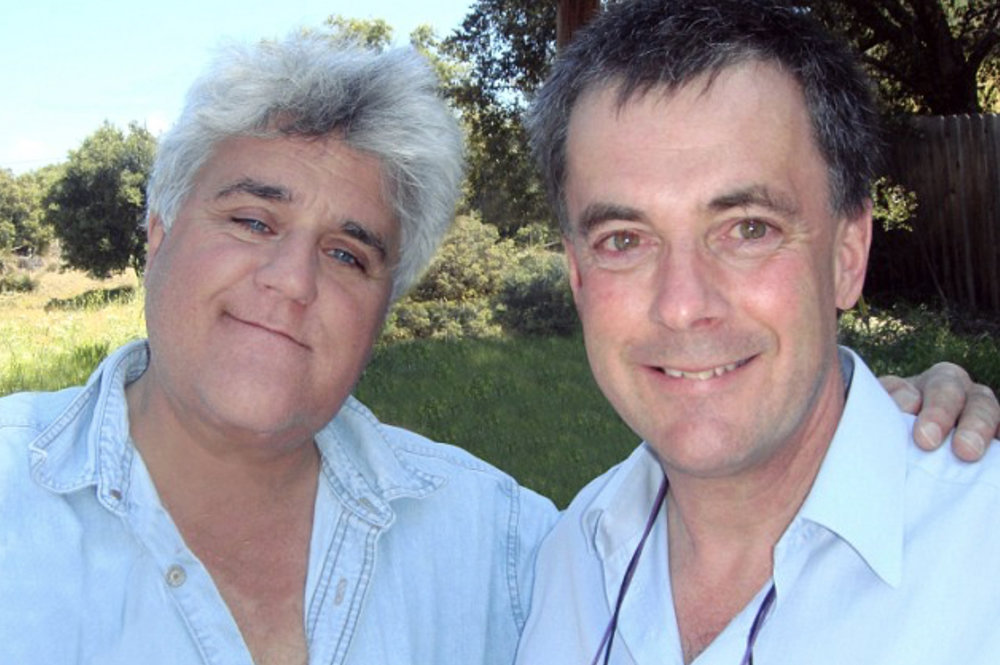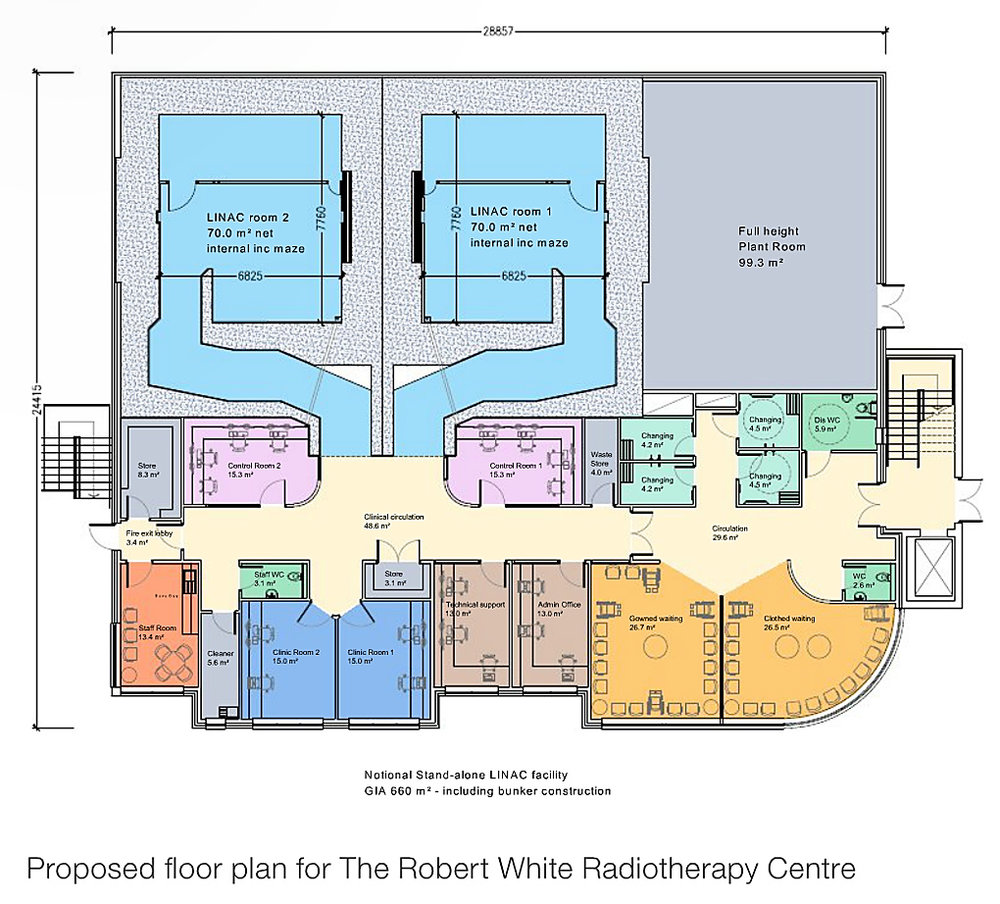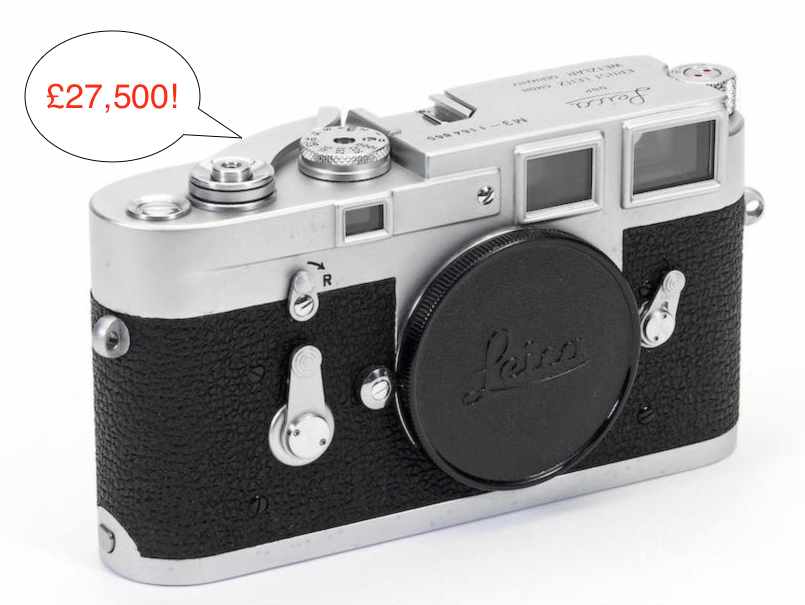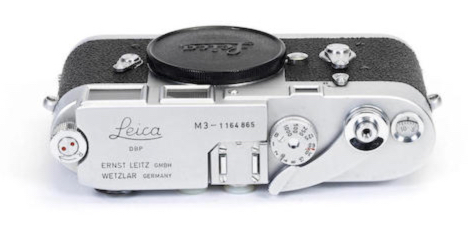How can a perfectly nice but seemingly ordinary Leica M3, listed at up to £800, turn out to be a prince of cameras worth a staggering £27,500?
It is a story that starts with the remarkable Robert White, photographic dealer extraordinaire and philanthropist of the first order. Robert, who had built up an extremely successful photographic and internet retail empire from his home town of Poole, Dorset, died ten months ago after a long battle with a rare form of cancer.

His friends knew that he was a keen collector—a magpie of almost everything that took his fancy. His first love was cameras and he would routinely stash away any likely collectible items that crossed his counter over the years. But he was also a rare aficionado of fine watches, Lalique glassware, model steam trains and motorcycles. His outstanding collection of Brough-Superior motorcycles has already been sold to US talk-show host Jay Leno. Even one Brough these days is a significant investment of around £300,000. Robert had a fleet of them.
£3 million
A week ago, the bulk of his collection—some of his finest watches, cameras and motorcycles—went under the hammer at Bonham’s in London. There were many wonderful items that attracted keen interest with the result that the final tally came to over £3 million, all destined for charity.
But there was one rather humble little Leica M3 that put the cat among the pigeons. This was a perfectly fine body complete with box and documentation, likely to fetch around £800 according to the guide book. The bidding started but soon went way beyond the suggested price. Two clients were soon bidding against one another over the phone. The price climbed steadily and the hammer went in favour of an unknown collector, apparently based in Canada. So how did this apparently humdrum little camera end up at £27,500, including buyer’s premium?
Ivor Cooper of Red Dot Cameras was at the auction and he recounted the story to me. As the auction progressed, none could imagine what the two bidders had seen in a camera that not even the auction house had recognised for what it was.
Ivor got to the bottom of it later. After careful scrutiny of the “blue book”, the 8th Edition Leica Pocket Book, he realised that this M3, serial 1164865, was actually the last one ever produced. The entry is clear: 1164846-1164865 M3 1966. It was the last in the line of arguably the most successful Leica M, the first Leica M, and still regarded as the finest of the lot, with hundreds still in regular use.

So there you have it. Two eagle-eyed collectors out of hundreds of potential bidders had both realised the provenance of this camera. Had it been just one clever soul he could probably have picked up the lot for little more than £1,000. It was the eventual buyer’s misfortune that one other had found the secret.
No one knows if even Robert White knew that he had the last M3 ever made. I like to think he did know; in fact, I would be very surprised if he didn’t.
_____________
- Subscribe to Macfilos for free updates on articles as they are published. Read more here
- Want to make a comment on this article but having problems? Please read this



What about the rest of the lot 1164846-1164865? How are they worth?
Thx anyone could help
Well that’s pretty straightforward. While the penultimate model might have some extra value (particularly if bought by the same guy who got the last one) the rest would be normal M3 prices, depending on condition. £800 would be toppish and I think the £400-£700 range would be right.
With early models the possibility for price premium is more extensive. 3 digit and 4 digit SN 1 Model As fetch high prices with the price going down as the SNs go up. There was a 3 digit 1 (SN 463) from 1925 at the Robert White Auction but, as it had been modified to a IIIf, the price was a modest enough £1,250. If it had not been so altered it would have been at least £9,000 for a very good one according to Collectiblend.
Moving on to the M3, as I said earlier, very early M3s in the 700,000 range fetch a premium. With late (towards the end of run) SNs we are into uncharted territory compared to early SNs. You rarely see such items with a serial number premium being sold at retail but from time to time they may come on ebay (caveat emptor etc). Mike may well be right about his price predictions but, at auction, good M3s rarely go for less than £700. The only way to truly test the market is to put something up for auction. There is no such thing as a ‘correct price’ until the market decides.
William
I had heard about this auction but somehow it went below my radar last week as I was concentrating on the Breker Auction in Germany last Saturday. I did not know Robert but I bought items from his company over the years and found them very good to deal with. I am delighted to know that such a large sum was raised for a worthy cause.
Bonhams operate in the US and, indeed, many of the auctioneers in the US classic car auctions are British and it seems that a well bred British accent is key to getting wealthy Americans to open their wallets. Jay Leno is the best known car collector in the US where he is the ‘King’ of the annual Pebble Beach Concours D’Elegance.
Moving on to the cameras, early serial numbers are often highly sought after, particularly for the two most significant models in Leica history, the 1 Model A and the M3. Early 1 Model As with 3 digit SNs and early M3s with SNs in the 700,000 range fetch high prices, but this is the first time that I have heard of such a large sum of money being paid for the last of a series. Our moderator on the Collectors’ section on the Leica Forum mentioned this item and its serial number, but only after the auction had taken place. I must go through my own collection to see if I have any significant numbers. I do know that I have the 23rd IIIa (first model with 1,000th to speed) ever produced, but it is not particularly valuable and I paid a normal price for it.
The prices fetched at the Robert White Auction and at Breker on Saturday were quite healthy, which is good news for those of us with existing collections. Some interesting items from the Breker auction included a stereo version of the Leica CL which was two Leica CLs welded together. A humble enough camera on its own, the double stereo version fetched €16,000. Another high price was for a SOM Berhiot 55m f1.5 lens in LTM mount which was estimated at €250-€400 but fetched €9,000. Two very early Japanese Leica copies sold for €4,400 each, well over the estimate.
It looks like that the vintage camera market is quite healthy right now, particularly for Leicas. The M3 still sells for good prices and is usually ahead of the M2 and M4 models in the collectors’ auction market, even though the latter two are more high prized by users. If the Asian buyers, who have been quiet for the past couple of years, are back, the auctions later in the Autumn, including Westlicht, should be very interesting. At least I can tell my wife that my collection is now probably worth more than I paid for it. But like all ‘investments’ values can also go down as well as up.
William
Lovely article on last ever produced Leica M3.
When my wife and I last saw saw Robert, just a few weeks before he passed away, I remember him saying: “George, my biggest worry is that the people selling the collection may not know the real value of some of the items.”
I’m sure he was well aware that the M3 No.1164865 was the last of the production. Robert was very astute.
Anyhow, thanks for the article on Robert. I am sure anyone who knew him would also be pleased.
A nice story and a great use for Mr. White’s estate.
If you shut one eye and use a bit of imagination, the plan of the Poole extension even looks a bit like an M camera.